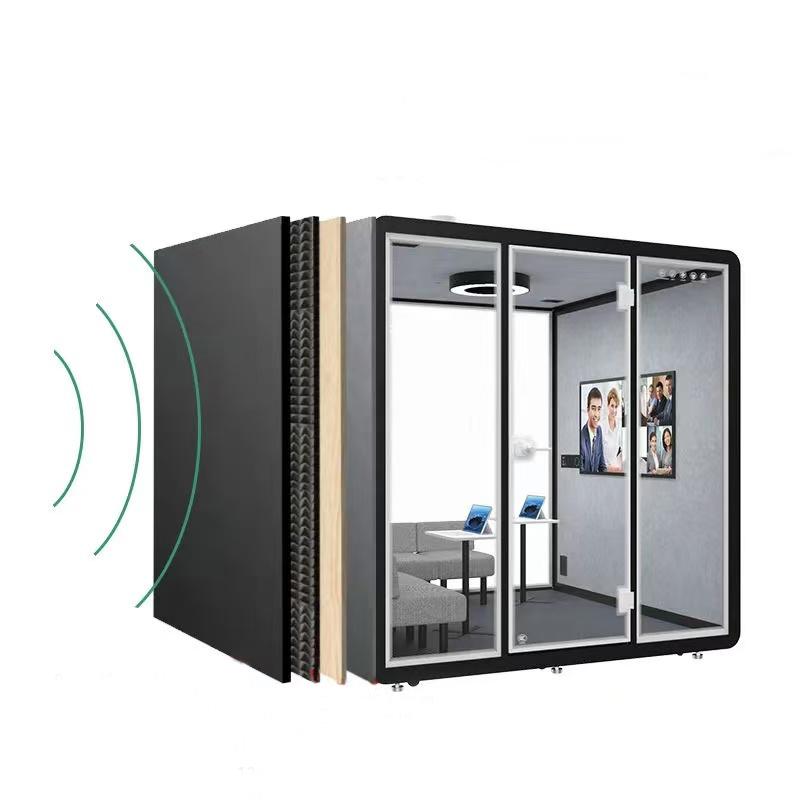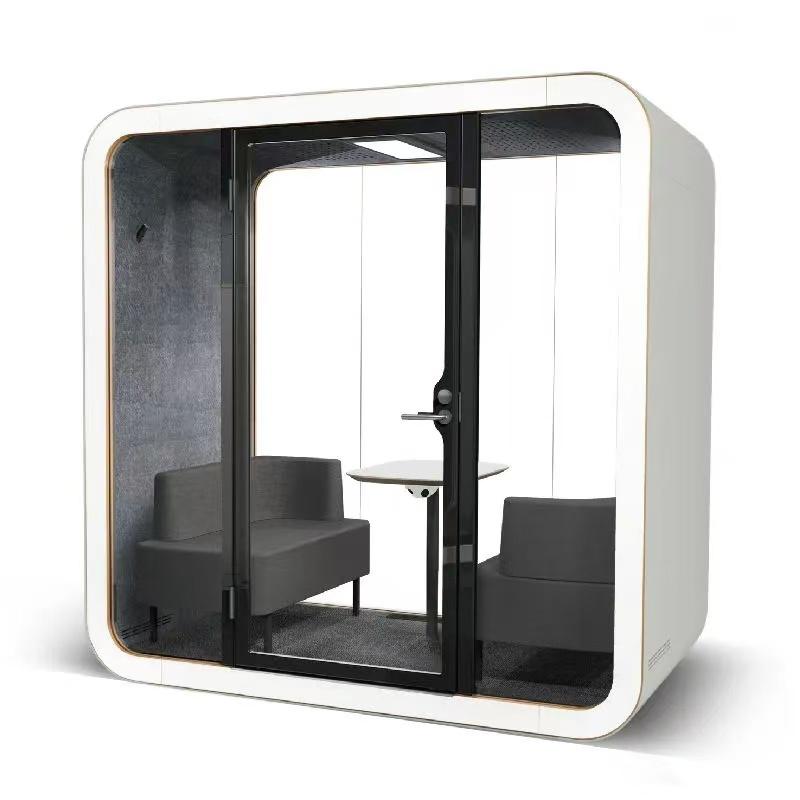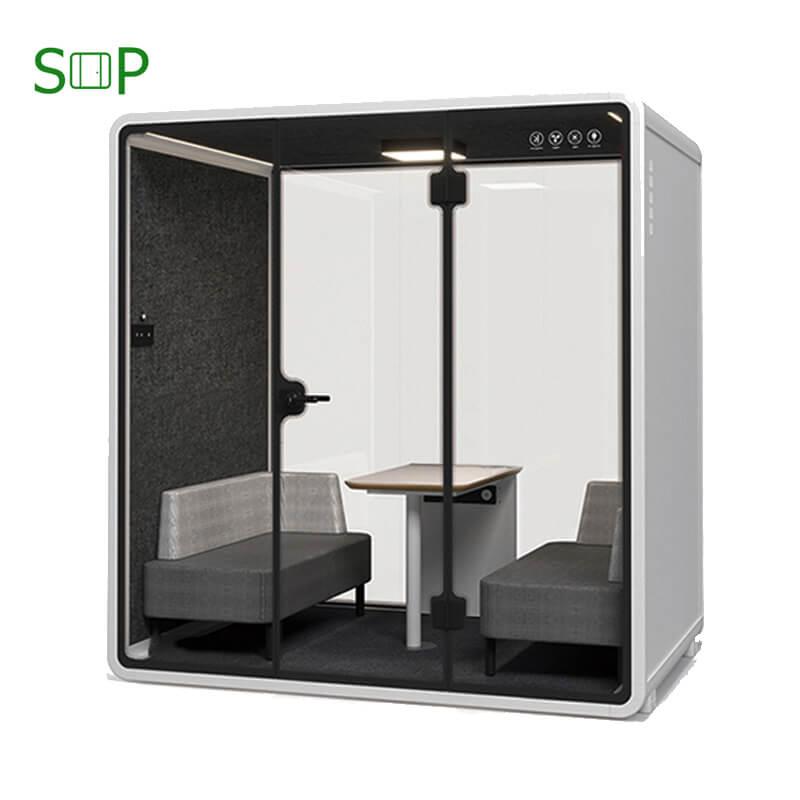Author:SOP Work Pods Manufacturer TIME:2025-02-25
A warranty is a promise from the manufacturer or seller that their product will perform as expected for a certain period. If defects or issues arise during this time, the manufacturer agrees to repair or replace the item. For meeting room booths, this usually covers defects in construction, materials, and functionality, ensuring that your investment remains protected.
When considering a meeting room booth, it's essential to understand the types of warranties available. The two most common options are:
Limited Warranty
A standard limited warranty typically covers defects in materials and workmanship for a defined period, such as 1 to 5 years. It's essential to read the terms carefully to understand what is and isn’t covered.
Extended Warranty
An extended warranty offers protection beyond the standard coverage, often for an additional fee. This type of warranty is useful for high-end or custom meeting room booths where long-term reliability is a concern.
When you invest in a meeting room booth, it’s crucial to know what aspects are covered by the warranty. Here’s a breakdown of common elements typically included:
Structural Integrity
The frame, walls, and foundation of the booth are usually covered. If there are issues like cracks or warping in the structure, the manufacturer will often repair or replace the affected parts.
Doors, Windows, and Locks
Malfunctions in doors, windows, or locks (e.g., faulty seals or hinges) may be covered by the warranty. Since privacy is essential in meeting booths, ensuring these components function properly is a priority.
Soundproofing Materials
A primary feature of meeting room booths is soundproofing. If the soundproofing degrades or fails prematurely, the warranty may cover repairs or replacements.
Lighting and Electrical Systems
Integrated lighting, electrical wiring, and ventilation systems in the booth could also be part of the warranty. These components are often built-in, and any malfunctions should be addressed by the manufacturer.
Material Defects
If materials such as fabric, wood, or finish show significant wear or defect, the warranty might cover a replacement.
Not everything is covered under a warranty. Here are common exclusions:
Wear and Tear
Normal wear and tear from frequent use, such as minor scuffs, scratches, or fabric wear, is rarely included in a warranty.
Improper Use or Installation
If the booth is improperly assembled or maintained, damages caused by misuse may not be covered under the warranty.
Cosmetic Damage
Aesthetic issues like minor chips or surface stains are typically excluded, as they don’t affect the booth’s overall functionality.
Third-Party Modifications
If you make unauthorized changes or install non-approved parts, the warranty may become void.
The length of the warranty varies depending on the manufacturer and the type of booth. Generally, meeting room booths come with:
1 to 5-Year Warranties
Most standard booths offer warranties in this range. For lower-cost models, the warranty is often closer to 1 year, while premium booths may offer a 5-year coverage period.
Lifetime Warranties
Although rare, some high-end, custom-built meeting room booths come with a lifetime warranty. However, these warranties may come with certain conditions, like specific usage limits.

When purchasing a meeting room booth, it’s essential to ensure you’re getting the coverage that suits your needs. Here’s what you should consider:
Warranty Length
Ensure the warranty period matches your expected usage. If you plan to use the booth frequently, a longer warranty might be worth it.
Coverage Specifics
Read the fine print and understand exactly what parts are covered. Focus on critical components such as soundproofing, electrical systems, and structural integrity.
Exclusions
Clarify what is not covered. Knowing the exclusions can help you avoid future surprises.
Claim Process
Make sure the manufacturer has a straightforward claims process. A clear process will make it easier to resolve any issues promptly.
Transferability
If your business relocates or you plan to sell the booth, check if the warranty is transferable to a new owner.
If your booth encounters a problem within the warranty period, here’s what you can typically expect:
Contact the Manufacturer
Reach out to the manufacturer or the seller to begin the claims process. Be prepared to provide proof of purchase and a description of the issue.
Submit Evidence
In some cases, you may need to submit photos or videos showing the problem. This can speed up the claim process.
Repair or Replacement
Once the claim is processed, the manufacturer will either repair the faulty part or replace the entire booth, depending on the nature of the issue.

An extended warranty can offer peace of mind, but whether it’s worth the extra cost depends on several factors:
Quality of the Booth
If you’re buying a high-end booth or one with complex features, an extended warranty may be a good investment.
Usage Frequency
If the booth will be used heavily or in a high-traffic area, the additional coverage may help you avoid unexpected repair costs.
Cost Comparison
Weigh the cost of the extended warranty against the potential repair or replacement costs. If the cost difference is minimal, it could be a good investment for long-term protection.
Understanding the warranty for a meeting room booth is essential to making a smart purchase. Be sure to review the warranty terms, including coverage, exclusions, and duration, before buying. A good warranty ensures that your booth remains functional and maintains its value over time. Whether you choose a standard or extended warranty, ensure that it aligns with your business’s needs and offers adequate protection for your investment.